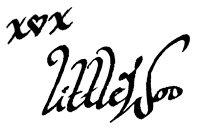Recently, I was biking home after a few hours of writing in my studio on Commercial Drive. As I arrived home, I pulled my bike over the tiny veranda in the backyard and heard a crash!
I looked to see where the sound came from and found a ceramic cup shattered in pieces on the ground. I realized someone must have been placed this cup in my bike basket while I was in the studio.
(Over the last 14 years, I’ve had 2 beer cans, a cigarette butt, a package of cigarette wrappers and some friendly notes thrown into my furry bike basket but never a ceramic cup!)
Checking my basket for any other clues, I found a business card from a ceramic artist named Jillian.
FLASHBACK:
Just a few days before, I was watching a dystopian television series called The Man in the High Castle and the beautiful Japanese concept of Kintsugi was brought up.
I had heard of this practice in the past and loved it very much but this episode brought it back to the forefront of my thoughts.
Kintsugi is a well-known as a Japanese art form where broken stoneware is repaired with lacquer mixed with precious metals like gold or silver. (It is translated as “golden joinery”.)
The concept behind Kintsugi is that it celebrates the breaks and repairs as part of the tender history of an object. These golden scars do not take away from its value but rather, adds to its richness.
The philosophy of Kinstugi reminds me of my “Wounds to Wisdom” process that I teach my clients and students.
As part of the journey to understand one’s soul expression and life purpose, we explore how our wounds can become our wisdom.
These wounds are part of our life purpose if we know how to work with them.
The inevitable bumps and cracks that we sustains are an important part of our story and not to be hidden with shame or judgment.
They become a beautiful badge of a life fully lived.
Each person carries golden scars that reveal how we’ve transformed pain into something beautiful or meaningful.
The wound of rejection can be mended with self-acceptance and the art of welcome.
The damage of judgment can be sealed with compassion and the art of understanding.
The pain of failure can be transformed with resilience and the art of perseverance.
Seeing that particular episode of the Man in the High Castle was auspicious because as I gazed upon this thoughtful ceramic gift now in many pieces, I immediately saw the chance to practice Kintsugi.
This is a photo of my humble efforts to mend the shattered cup…
Clik here to view.

(I used ceramic glue covered with some gold wax seal. I used to have some fine gold dust (for body painting) that I would have mixed into the ceramic glue for better effect. Maybe next time I break some ceramic, I can try that approach!)
The cup now sits in my office bookshelf as a symbol for the Wounds to Wisdom process.
It is a wonderful reminder that what is “broken or damaged”, becomes beautiful and meaningful as we repair it with love and appreciation.
Our scars are not ugly but inspiring symbols of our resilience and capacity to mend.
This cup also reminds me how many pieces of magic came together in a very timely way that afternoon.
I shared this story and photo with the artist and they wrote back saying:
“I always admired your bike so I put one of my pieces in there – which is the kiwi mug. It looks amazing with the gold. I actually just moved to Manitoba on Friday which is why I was leaving ceramics around Vancouver.”
May we all practice Kintsugi as we turn our wounds into something meaningful and beautiful…
Clik here to view.
